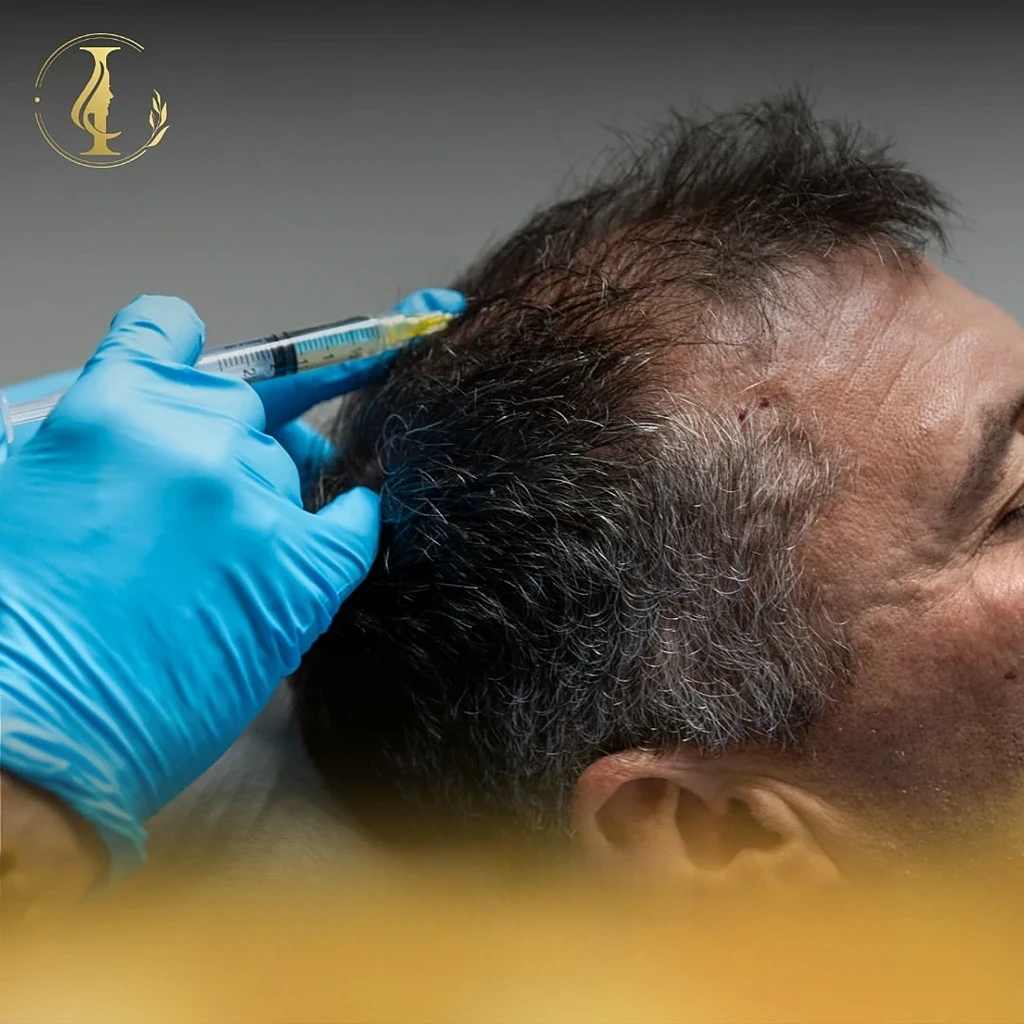Hair loss affects millions of men and women worldwide, often leading to reduced self-confidence and emotional distress. Androgenetic alopecia (AGA)—commonly known as male- or female-pattern baldness—is the most frequent type of hair loss. Traditional treatment options like Minoxidil® and Finasteride® have been the go-to solutions for decades, but there’s growing interest in a regenerative approach called Platelet-Rich Plasma (PRP) therapy.
A recent systematic review examined the effectiveness of PRP compared with standard treatments, offering promising insights for those seeking an alternative. Here’s what you need to know.
What is Platelet-Rich Plasma (PRP)?
PRP is a concentration of platelets derived from your own blood. These platelets are rich in growth factors—proteins that stimulate cell repair, tissue regeneration, and, in the case of hair loss, hair follicle activation.
The process is straightforward:
- A small amount of blood is drawn from the patient.
- The blood is placed in a centrifuge to separate platelet-rich plasma from other components.
- The PRP is injected directly into the scalp in areas experiencing thinning or hair loss.
Because PRP comes from your own body, the risk of allergic reactions or major side effects is minimal. This makes platelet rich plasma hair loss treatments an appealing option for many.
The science behind PRP for hair loss
The systematic review followed PRISMA-P guidelines and examined studies from databases such as PubMed, MEDLINE, and Cochrane. Out of 163 initial articles on PRP and hair loss, 12 high-quality clinical trials met the strict criteria for inclusion.
These studies measured PRP’s effectiveness on hair density, thickness, and regrowth compared to control treatments or other established therapies.
Key findings:
- 84% of the studies reported positive results from PRP for AGA.
- 50% showed statistically significant improvement in hair parameters.
- 34% observed improvements in hair density and thickness but lacked full statistical analysis.
- Early-stage AGA patients tended to respond better.
- Only 17% of the studies found PRP to be ineffective.
- No major side effects were reported.
PRP vs. Minoxidil® and Finasteride®
While Minoxidil® and Finasteride® remain first-line options for many patients, they work through different mechanisms:
- Minoxidil®: A topical solution that promotes vasodilation, increasing blood flow to hair follicles.
- Finasteride®: An oral medication that reduces levels of dihydrotestosterone (DHT), the hormone responsible for shrinking hair follicles in AGA.
- PRP: Delivers concentrated growth factors directly to the scalp, stimulating dormant follicles and enhancing the hair growth cycle.
The review suggests that PRP can offer results comparable to these traditional treatments—especially in early or moderate stages of hair loss. For some patients, combining PRP with Minoxidil® or Finasteride® may enhance results.
Who benefits most from PRP?
PRP may be especially effective for:
- Men and women in the early to moderate stages of AGA.
- Patients who have experienced side effects from Minoxidil® or Finasteride®.
- Individuals seeking drug-free, non-surgical options for hair restoration.
- Post-hair-transplant patients who want to improve graft survival and density.
The PRP hair treatment process
At International Hair Clinic, the PRP process is designed to be comfortable and minimally invasive:
- Consultation – Assessment of your hair loss pattern, medical history, and expectations.
- Preparation – Blood is drawn and processed in a centrifuge to extract platelet-rich plasma.
- Application – PRP is injected into targeted scalp areas using fine needles.
- Aftercare – Minimal downtime; patients can typically resume normal activities within 24 hours.
Treatment frequency:
- Most patients undergo 3–4 initial sessions, spaced 4–6 weeks apart.
- Maintenance sessions every 6–12 months help sustain results.
Safety and Side Effects
PRP is considered safe because it’s autologous (from your own blood). Side effects are generally mild and temporary, such as:
- Slight swelling or redness at injection sites
- Tenderness of the scalp for a day or two
- Minimal risk of infection when performed in a sterile environment
Limitations and ongoing research
While the results are promising, PRP research still faces challenges:
- Variability in PRP preparation methods between clinics
- Small sample sizes in some trials
- Need for standardized treatment protocols
Future studies with larger participant groups and longer follow-ups will help determine the optimal PRP formula and schedule for hair loss treatment.
Why choose PRP at International Hair Clinic?
Our clinic combines scientific evidence with advanced techniques to maximize your results. We use high-concentration PRP systems and precise injection protocols tailored to your hair loss pattern.
By staying updated with the latest research, we ensure our patients receive treatment aligned with proven medical standards.
Conclusion
The systematic review shows that platelet rich plasma hair loss therapy is a safe and effective alternative—or complement—to Minoxidil® and Finasteride®. With the majority of studies reporting positive results, PRP offers hope to those seeking a natural, minimally invasive solution for androgenetic alopecia.
If you’re experiencing hair thinning or balding, an early consultation can help determine whether PRP is right for you. At International Hair Clinic, we’re committed to helping you restore not only your hair but also your confidence.

